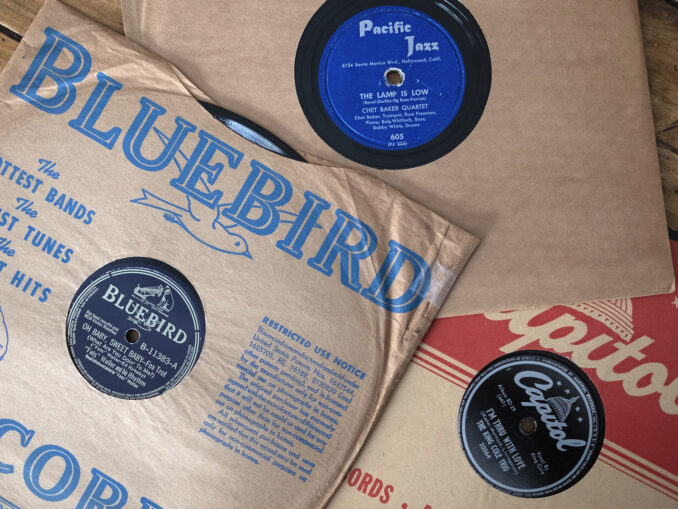
Why listen to 78s? I imagine that question has crossed more than a few minds and I’m here to give my answer and in the process talk about some gear that helps get the best from these musical treasures.
Let me begin by stating the obvious—listening to 78s is about music-inspired fun. Fun with a capital “F” (and there’s no “fretting” in “fun”). For any number of reasons, 78s have a distinct sound quality typified by astounding in-room energy, the kind of energy that breathes life into musicians captured on shellac (or vinyl), turning stored sound in grooves into airborne waves that leap into the room feeling fresh and alive with humanness.
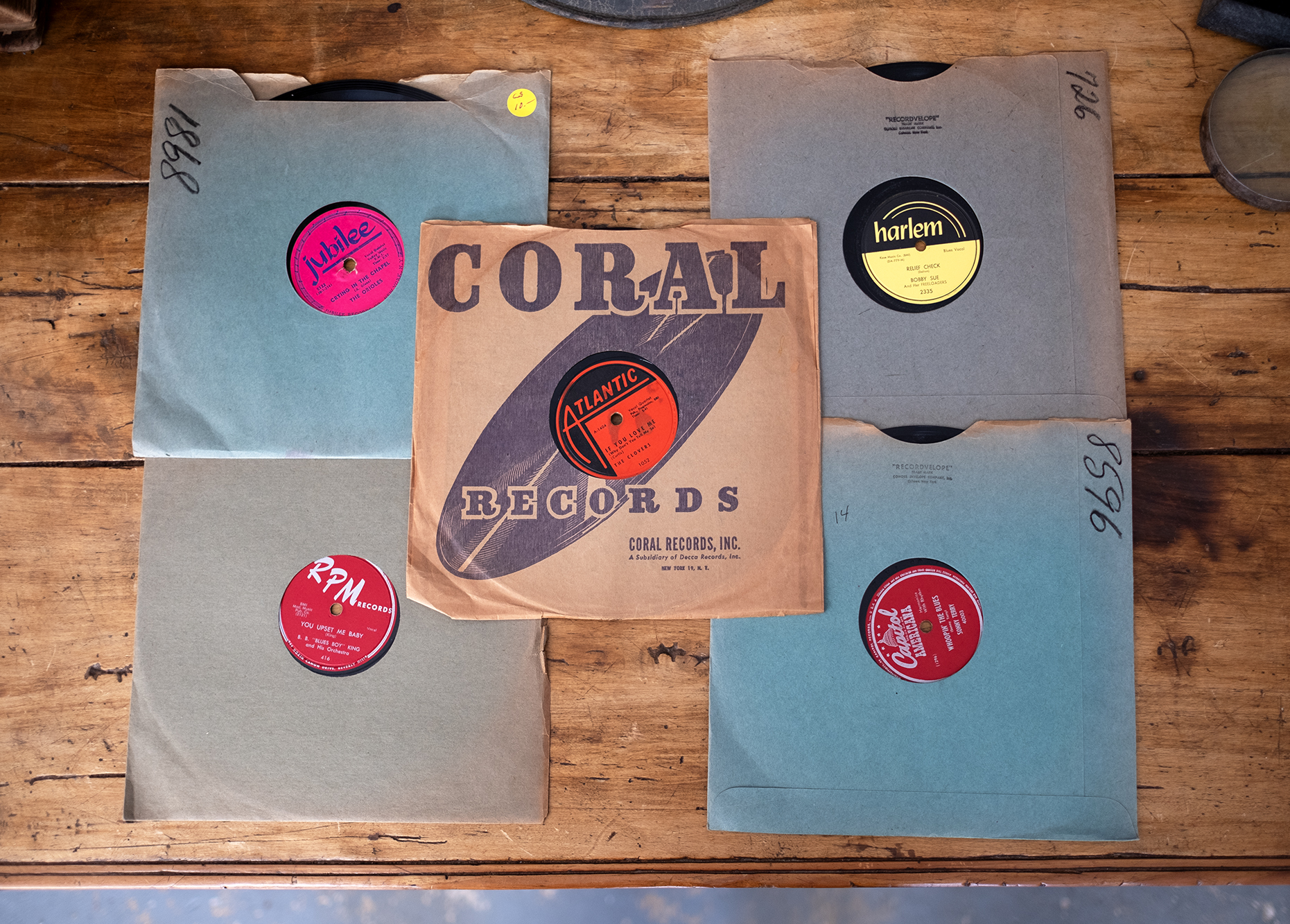
I’ve had the pleasure of listening to 78s a number of times over the years in group settings and the look on people’s faces who are new to hearing them properly reproduced is always one of surprise and joy. As if to say, “Do you hear this? It’s amazing! It’s just so good!”
To properly play back 78s, you need the right stuff just like listening to hi-res digital, 45s, LPs, cassettes, and multi-channel/Immersive recordings. But first some history.
A Little 78 History
The first disc records, round and flat, came from Emile Berliner and hit the commercial market in the 1880s. These discs, originally called a “gramophone record”, spun at a variety of speeds and came in a number of sizes. The Gramophone Company set 78rpm as their recording standard in 1912, but it took years before that standard took hold.
Early 78 releases were acoustic recordings, where musicians sang and played their instruments into a horn with a diaphragm on the skinny end that vibrated a cutting stylus. Western Electric, among others, introduced the first electrical recordings in the 1920s, replacing that horn with a microphone, tube amplifiers, and an electromechanical recording head that cut the lacquers used for pressing shellac records. The use of shellac for records lasted until 1948 when WWII saw the US Armed Forces produce thousands of 12-inch vinyl 78rpm V-Discs for the troops overseas.
78s were largely released in a 10” format which could hold about 3 minutes of music per side. The 12” 78 was introduced in 1938 to allow for a play time of 4-5 minutes per side. Longer musical sections could certainly occupy more than a single side and Record Albums included multiple discs containing a single piece of music over multiple sides (Verdi’s opera, Ernani, was released by HMV in 1902 on 40 single-sided discs).
RCA Victor released the first 7” 45rpm single in February of 1949 and the 10” and 12” 33 1/3 LP, introduced by Columbia Records in 1948, gained commercial popularity by the early 1950s. 78s continued to be produced up until the summer of 1958 in the U.S. with a few countries continuing 78 production into the late 1960s. Yes, the Beatles on 78 is a thing.
The Playing 78s Properly Shopping List
- A mono cartridge designed to play 78s
- A phono preamp that offers pre-RIAA EQ Curves
- A record player that’ll spin at 78rpm
- 78s
For this review, I filled that list with:
- Ortofon SPU Mono CG 65 Di MkII
- Gold Note PH-10 Phono Stage and the Aurorasound EQ-100 Variable Equalization Monaural Phono Amplifier
- Technics SL-1210GR
- 78 details to follow
Ortofon SPU Mono CG 65 Di MkII ($1,057)
My reason for picking the Ortofon is two-fold—I’ve heard this exact cartridge in use playing 78s and I owned a few Ortofon SPU-As and used a Shindo-modified version that lived on a Shindo Mersault RF-773 12-inch tonearm on a prototype Auditorium 23 Nouvelle Verdier turntable. And I loved them all.
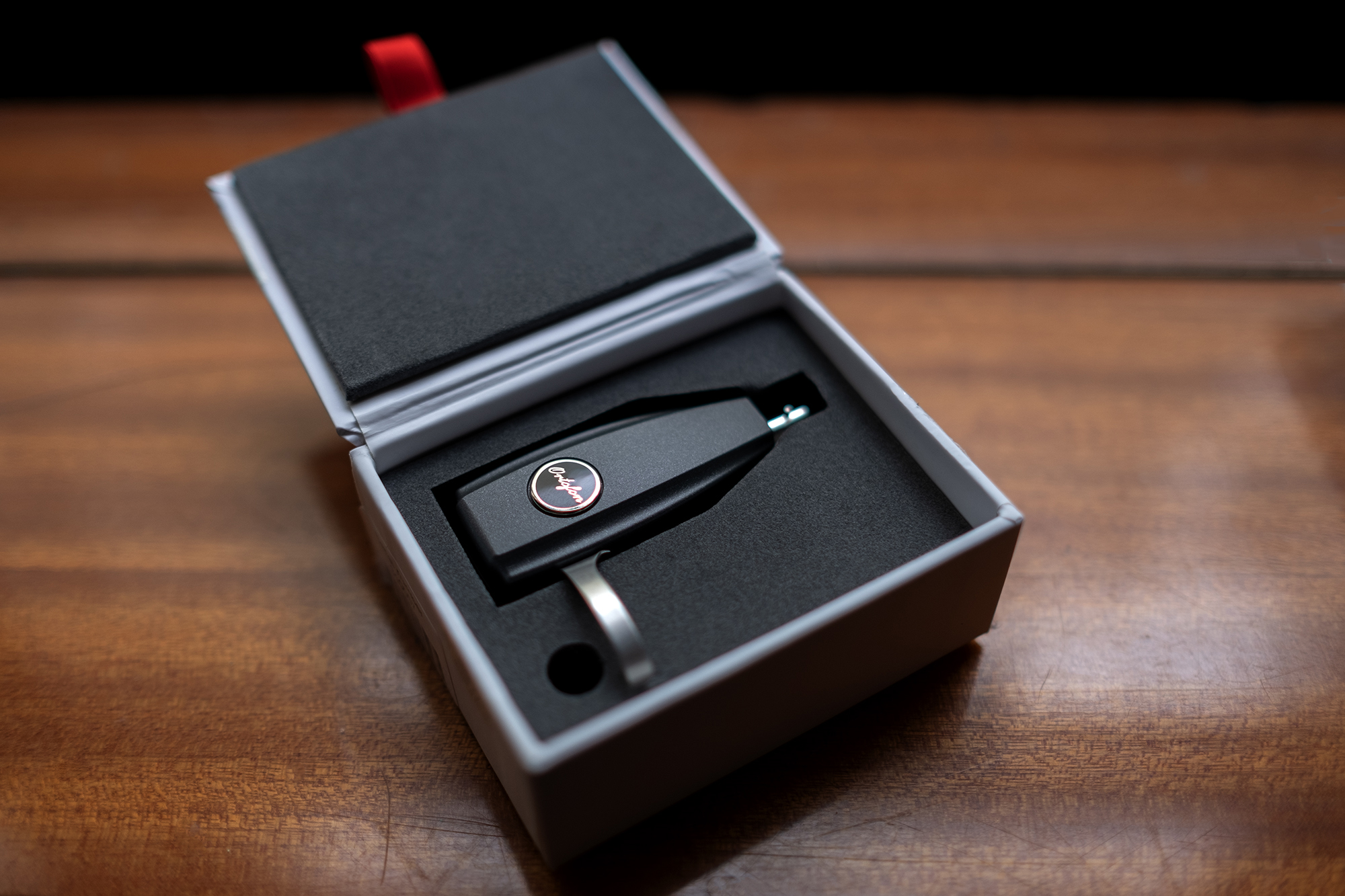
Ortofon’s first SPU (Stereo Pick Up) was launched in 1959 and was designed for professional use. The Ortofon SPU Mono CG 65 Di MkII sports a spherical stylus profile for expertly riding the grooves of 78s (which are mono) and early mono records and offers a 1.5mV output. It also happens to weigh a whopping 35 grams and Ortofon recommends tracking at 4.5 grams. Heavy. I also happen to think the Ortofon SPUs are stone cold classic beauties in looks, fit and finish.
Why do we need a cartridge designed to play 78s? The main difference between a cartridge designed for playing 78s as opposed to stereo LPs is the size of stylus—shellac 78s have larger grooves compared to vinyl LPs, about 4-5 times larger, so cartridges designed to play 78s have a larger stylus to better ride those larger grooves. And due to the faster speed of rotation and the potentially rough(ish) condition of 78s, a heavier tracing force than that used for LPs is recommended. Like I said, heavy.
Gold Note PH-10 Phono Stage ($1999)
The Gold Note PH-10 offers “Decca London” and “American/Columbia” presets for playing back pre-RIAA records which can be “Enhanced” using our proprietary technology inspired by the Neumann Cutting Lathe to extend the frequency response up to 50kHz, which in some systems can improve even further the stage, dynamics and resolution. In addition, you can also play yer basic LPs using the RIAA setting and there are a total of 4 Gain options (-3dB, 0dB, +3dB, +6dB ) and 9 Load options (10, 22, 47, 100, 220, 470, 1000, 22K, 47K) to match your MM and/or MC cartridge requirements.
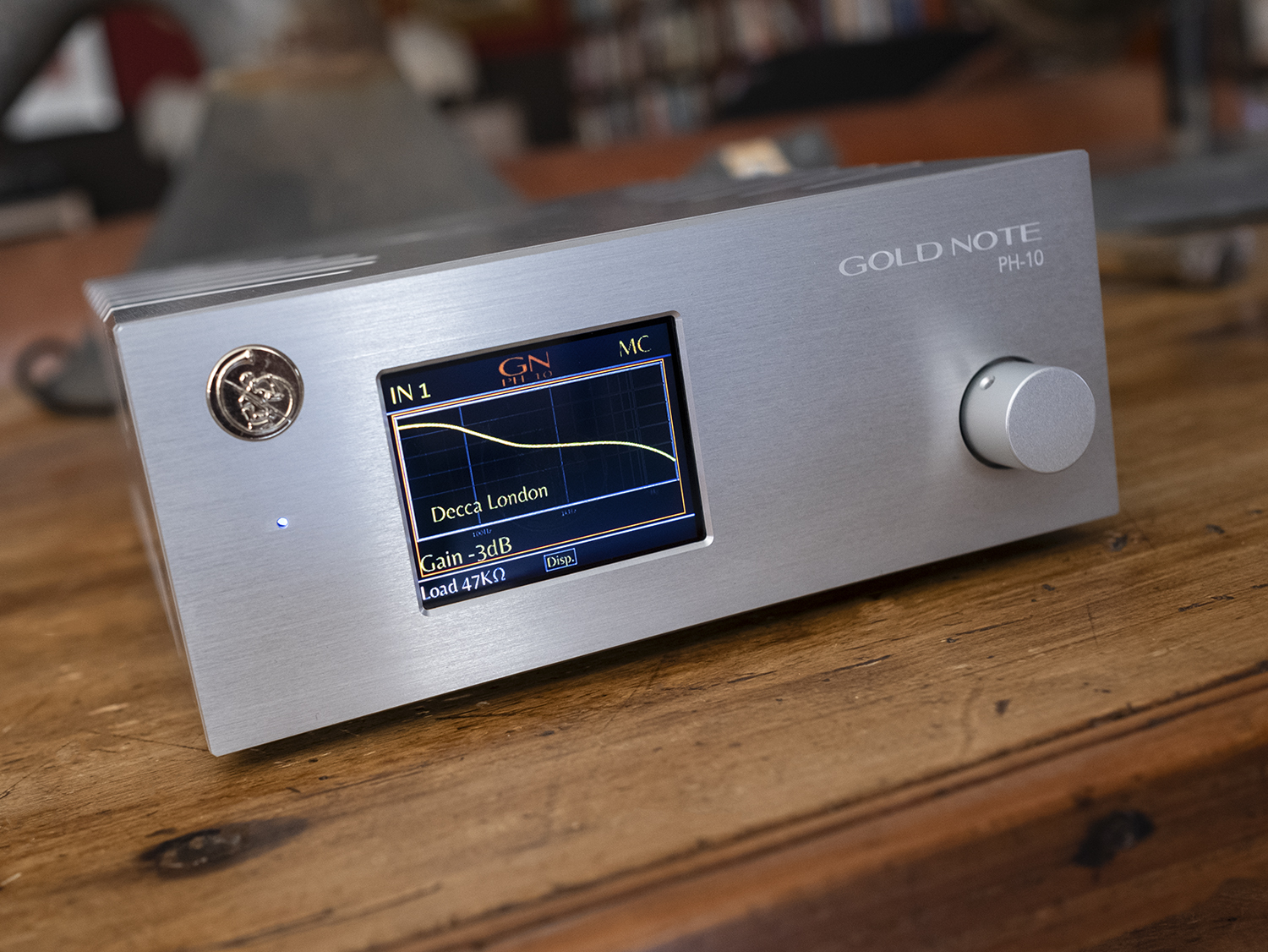
Changing settings is as easy as a twist and push of the front panel knob with the visual assistance of that 2.8″ color TFT display. Very nice.
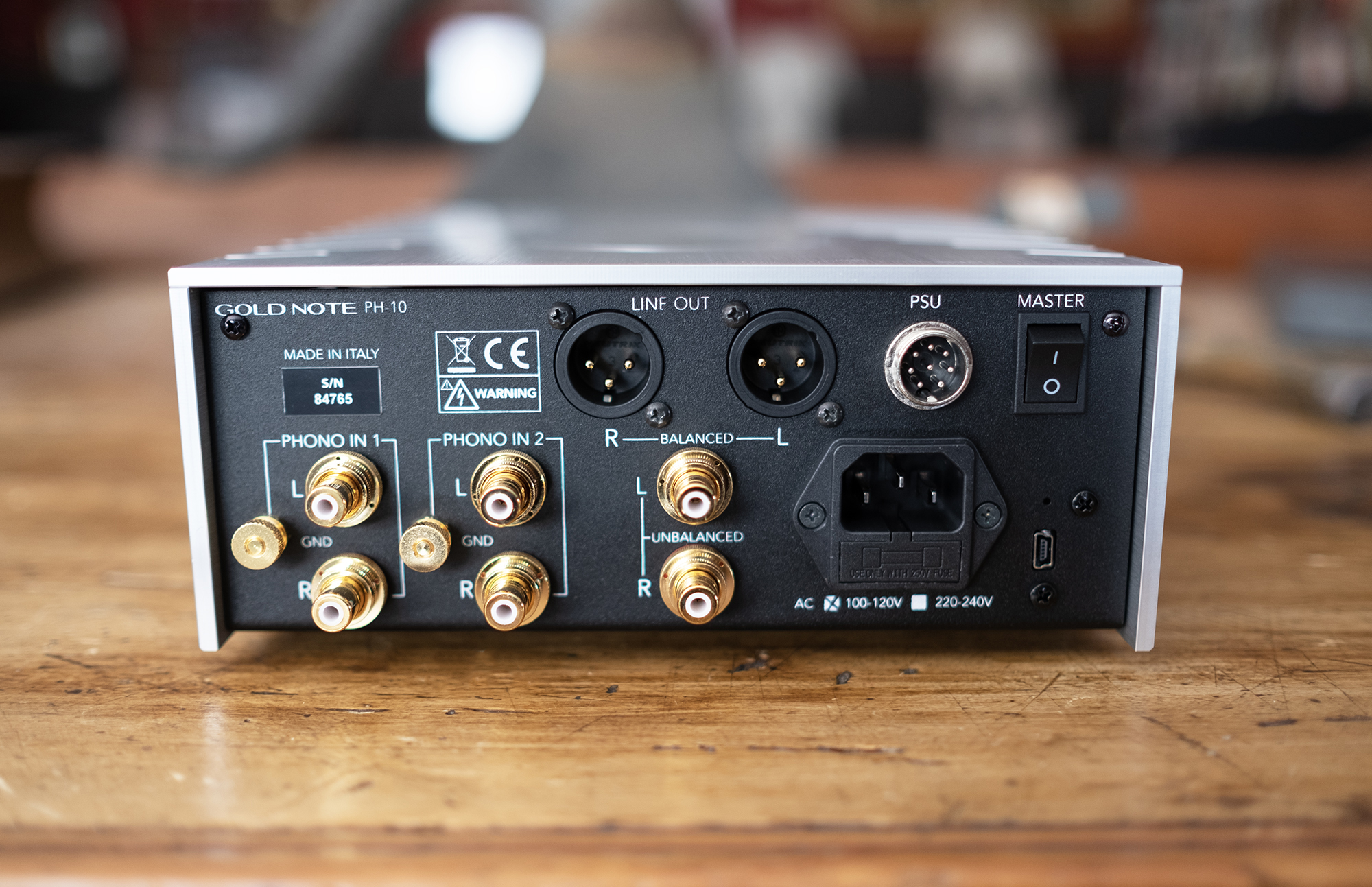
Around back are 2 pair of single-ended RCA inputs to accommodate two tonearms/carts and single-ended RCA and balanced XLR outputs. While there’s a standard IEC inlet for attaching a power cord, that PSU DIN is for attaching Gold Note’s PSU-10 External Power Supply (+$1199).
Aurorasound EQ-100 Variable Equalization Monaural Phono Amplifier ($3190)
If looks could kill, I’d say the Aurorasound EQ-100 slays by wearing its EQ Curve-ability on its face(plate).
Why do we need EQ curves? Before the RIAA equalization standard was set in the 1950s, different record companies like Decca, Columbia, and more than 98 others baked their own EQ curves into their 78s so you need to ‘unbake’ a 78rpm record using the proper curves. Essentially we’re talking about pre-emphasis when recording where bass is reduced and high frequencies boosted and de-emphasis on playback.
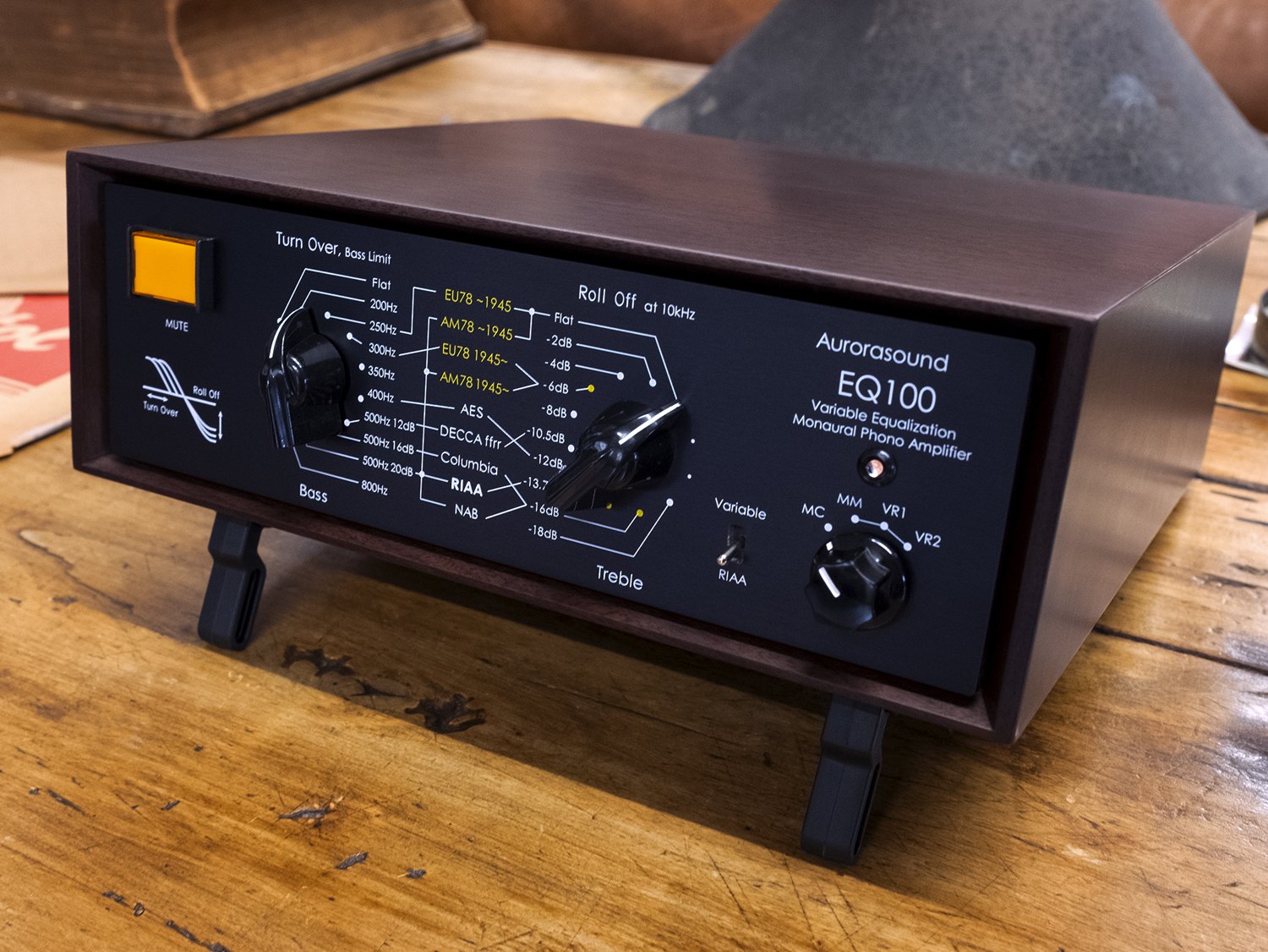
From Aurorasound:
The EQ-100, an Adaptive Multi-curve Phono Equalizer Amplifier, is compatible with any analog records capable of accommodating any record-cutting characteristics from SP (78rpm) to monaural LP (33 1/3rpm). The equalization value of Turnover in the low frequency range and Roll-off in the high frequency range are shown on the front panel, each having 10 selection. Accordingly, a total of 100 combinations are feasible independently without any mutual interferences. An easier setting is provided for a typical cutting characteristic such as 78rpm SP in US, in Europe 4 kinds (EU78 ~945, AM78 ~1945, EU78 1945~, AM78 1945~ ), for LP, RIAA , AES, DECCA, Columbia, NAB. Especially for DECCA, Columbia, and RIAA, a specifically designed Bass Limiter is provided for each record label to attenuate low frequencies for accurate playback.
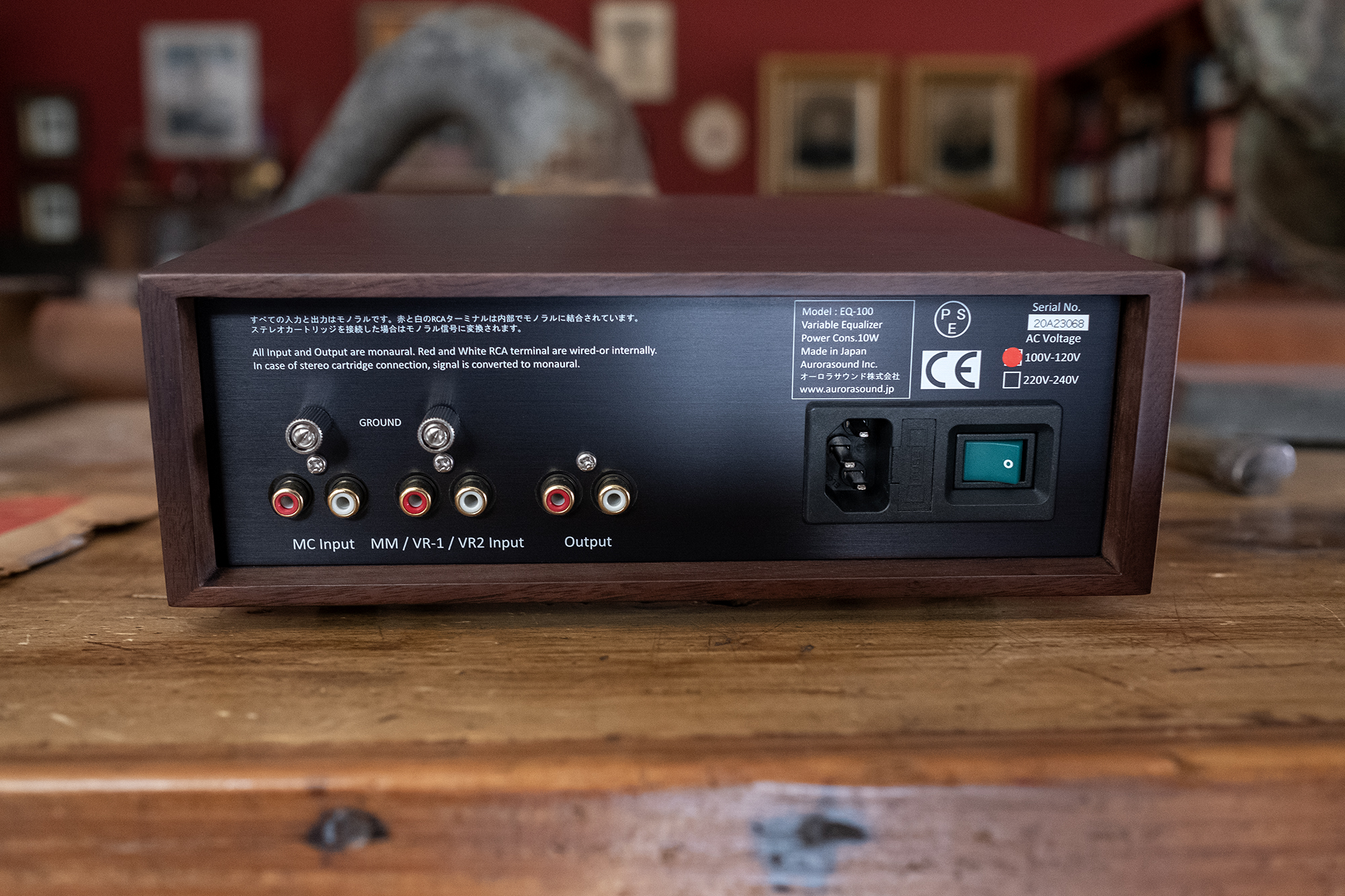
The EQ-100 accommodates MM and MC mono or stereo cartridges but all inputs and outputs are monaural (baby).
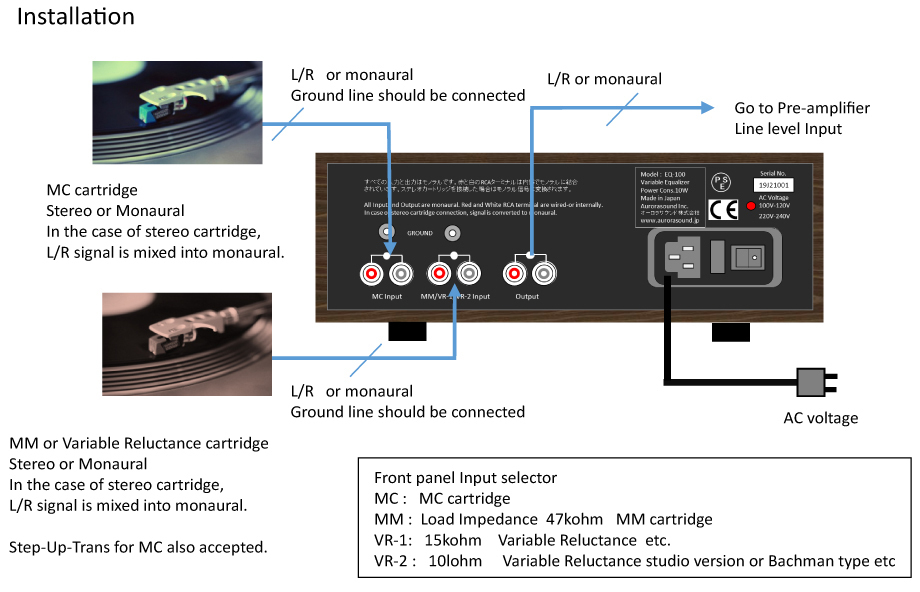
Technics SL-1210GR ($1799.95)
The SL-Series of turntables from Technics dates from 1972 and they are, by any definition, another stone cold slab of classic hifi. The SL-1210GR is among a number of current SL models ranging in price from $1,799.95 to $19,999.95 for the lovely SL-1000RE-S.
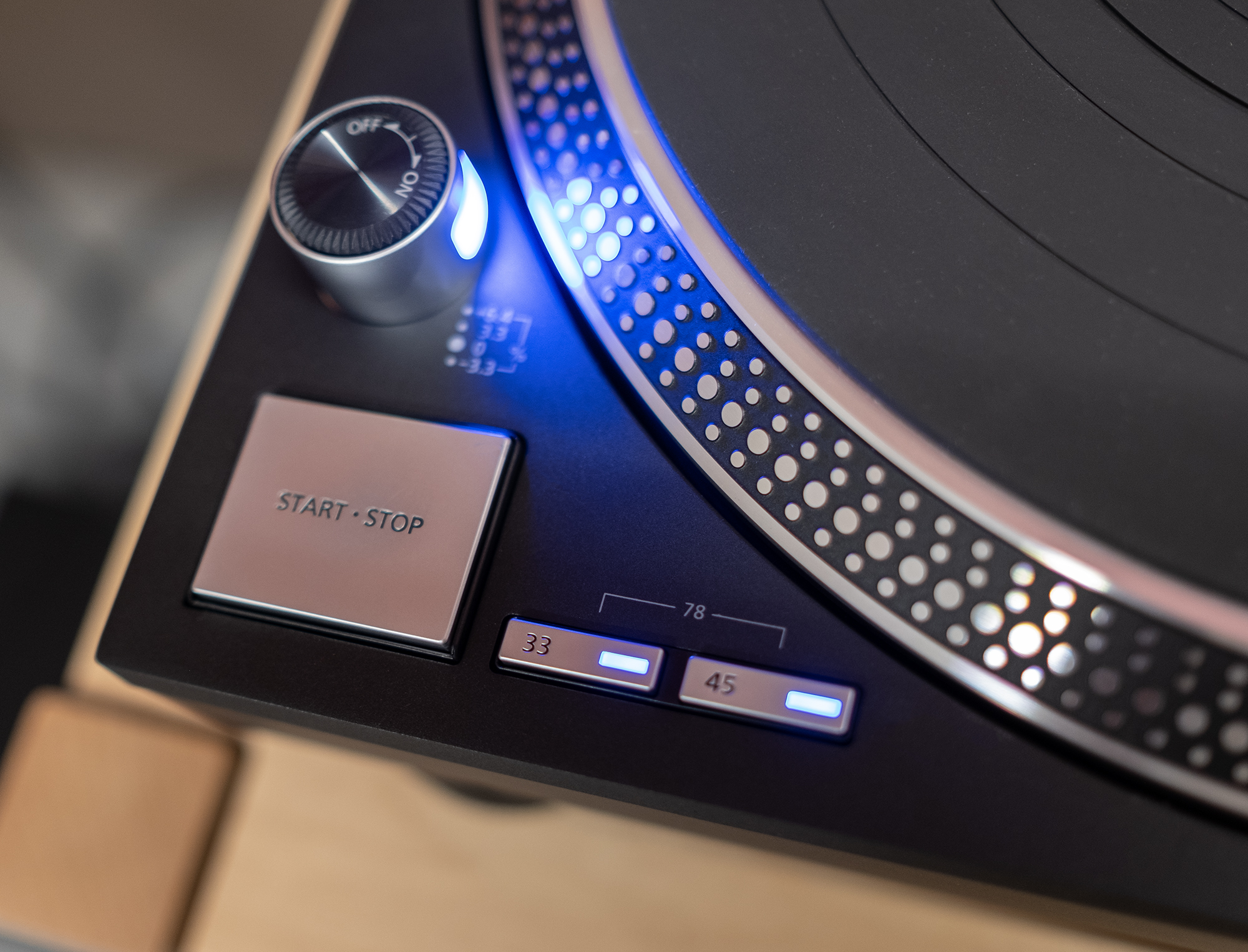
Here are some of the new features found in the SL-1210GR from Technics:
- Newly developed coreless direct-drive motor with no iron core eliminates cogging
- Advanced motor control technology for high starting torque and high-speed stability.
- Three-layer turntable construction with deadening rubber to eliminate unnecessary resonance
- The balance of the turntable is adjusted at the factory using specialized high-precision equipment
- High-sensitivity aluminum tonearm for a high damping effect
The SL-1210GR offers a pair of RCA outputs and a ground terminal (RCA cables and ground wire are included), and a number of tonearm adjustments including arm height to lock in your cart of choice. Sticking to its DJ/turntable as instrument heritage, there’s a pitch slider for modulating same and those four rows of strobe mirrors act as a visual pitch guidance system. It’s worth noting that not all 78s spin at precisely 78 rotations per minute so some hardcore spinners appreciate the ability to dial-in the correct speed in and around 78rpm.
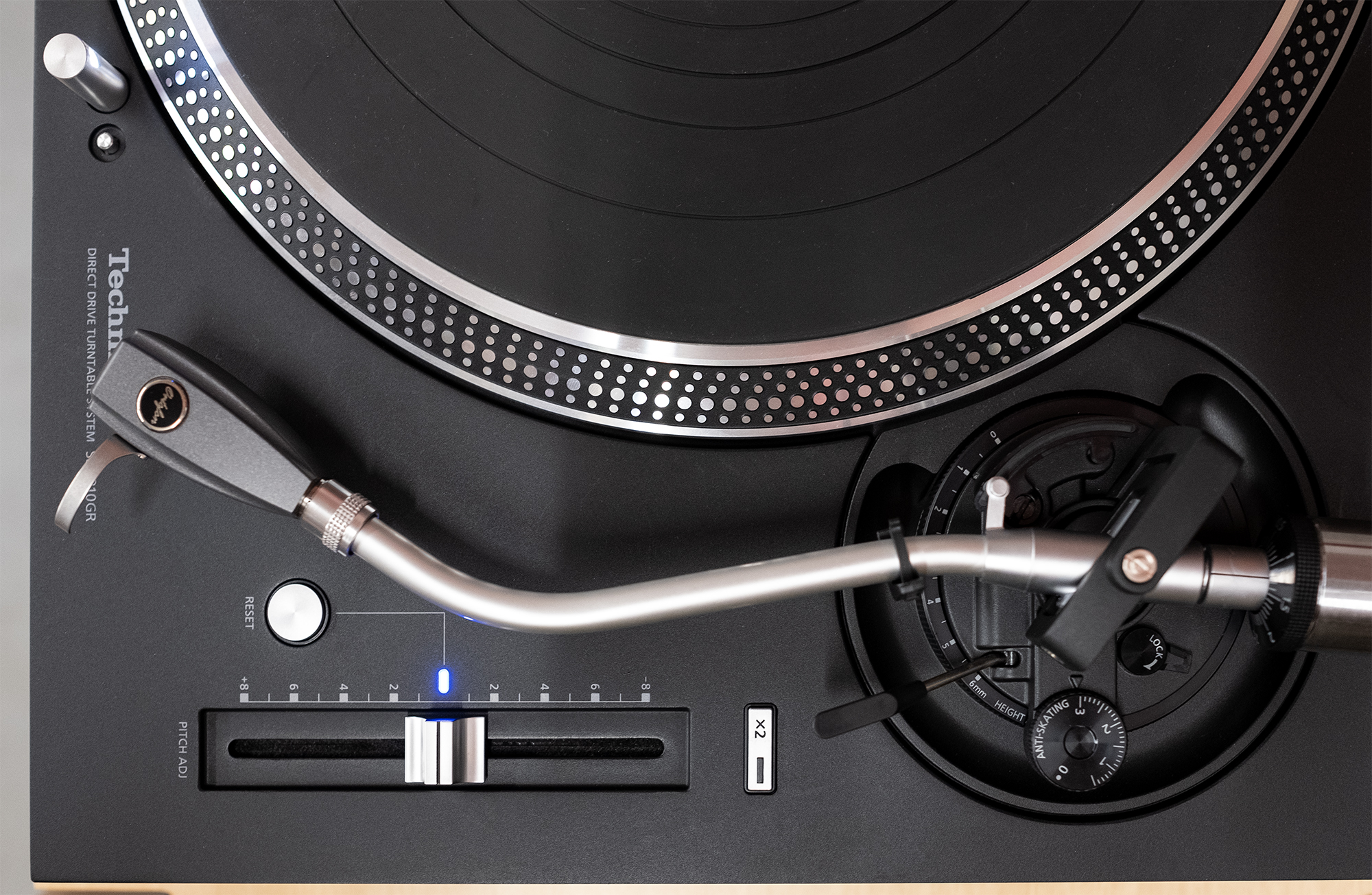
I purchased a number of 78s for this review, and for personal health and well being, from eBay, 13 in total, ranging in price from $2.99 to $33 with an average price of $13 (I love numbers). In case you’re wondering, the $33 spend was for John Lee Hooker’s “I’m In The Mood”.
My 78s
John Lee Hooker: I’m In The Mood/How Can You Do It (Modern Records, 1951)
Lil Son Jackson: Journey Back Home/Rockin and Rollin #2 (Imperial, 1952)
The King Cole Trio: Look What You’ve Done To Me/I’m Thru With Love (Capitol, 1946)
Fats Waller: Oh Baby, Sweet Baby/PAN-PAN (Bluebird, 1941)
Chet Baker Quartet: The Lamp Is Low/Maid In Mexico (Pacific Jazz, 1953)
Maria Elena Sandoval: Ayudame Dios Mio/Cuando Me Pierdas (Orfeon, ?)
The Staple Singers: Uncloudy Day/I Know I Got Religion (Vee Jay Records, 1956)
Bobby Blue Bland: Farther Up The Road/Sometime Tomorrow (Duke, 1957)
The Clovers: Blue Velvet/If You Love Me (Atlantic, 1955)
B.B. “Blues Boy” King: Whole Lotta Love/You Upset Me Baby (RPM, 1954)
Bobby Sue & The Freeloaders: Relief Check/It Takes A Lot of Love (Harlem, 1955)
Sonny Terry: All Alone Blues/Whoopin’ The Blues (Capitol Records, 1947)
The Orioles: Crying In The Chapel/Don’t You Think I Ought To Know (Jubilee, 1953)
I also held a small 78 listening party for a few friends who brought along a nice haul of their own 78s. And that’s another important thing about listening to 78s—they are that much more enjoyable with friends.
Listening
I printed out the handy dandy “Tempo Electric’s 78 RPM EQ and Speed Settings by Label” list since I’m new at this and welcomed the guide. That said, it turns out that some people prefer to set the curves by ear and I’m inclined to go that route but it’s a personal preference kind of thing.
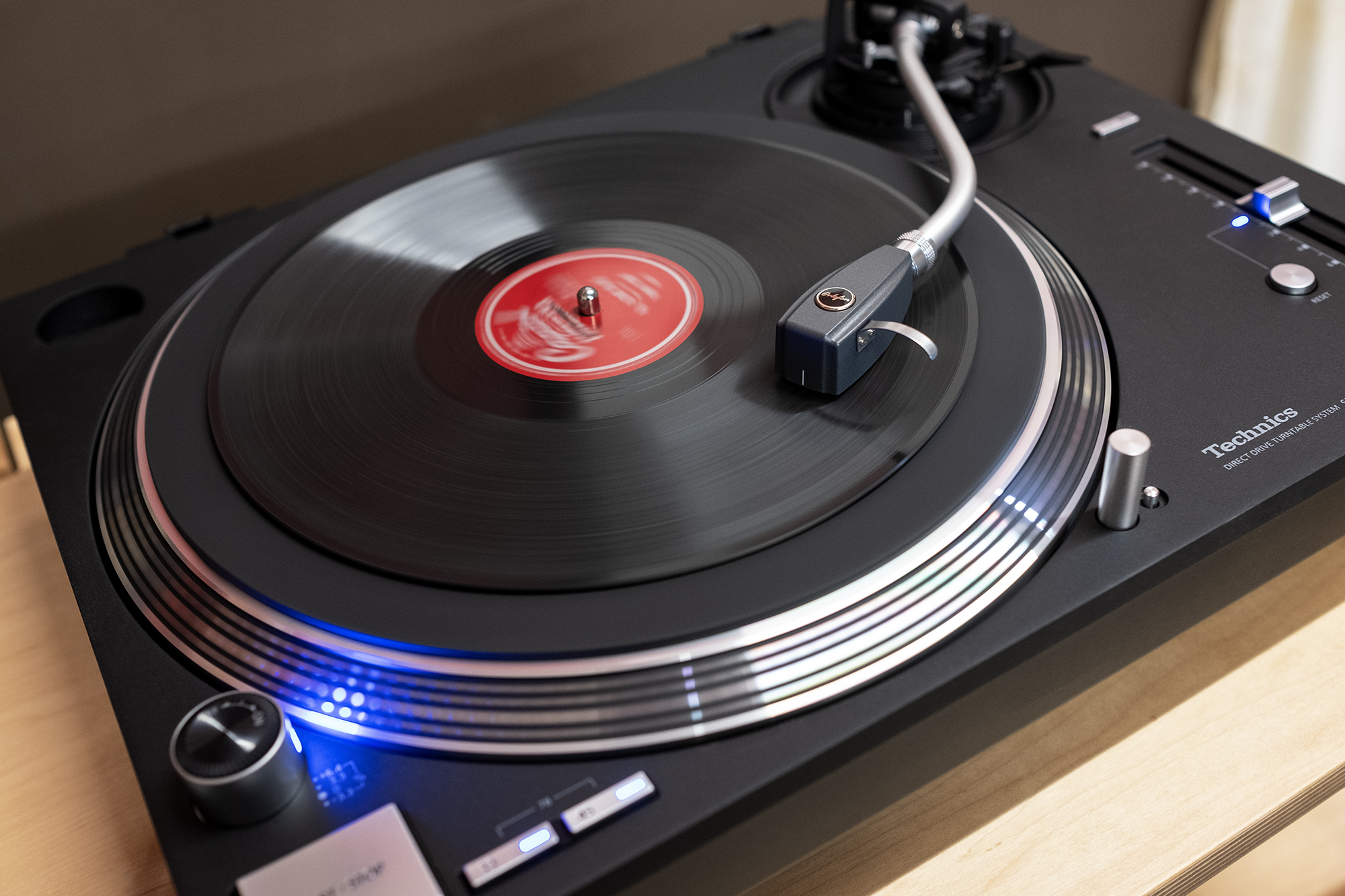
All of these records are about 70 years old, give or take, so surface noise is something you can expect. That said, when listening to 78s (or 45s or LPs), I forget about surface noise as soon as the music begins because it is clearly separate and apart from the music, making it easy to filter out, at least for me. Not a one in my small bunch skipped and they were very much as described by the respective eBay sellers [footnote 1]. Another brilliant thing about buying 78s in our modern era is you can listen to just about any you find online before buying. Every single 78 of interest to me, and I looked at and listened to A LOT, was available on YouTube as a video playing the same 78. Brilliant.
The rest of the system used for listening included the Vivia Solista integrated amp (more info) that’s in for review and the Barn resident DeVore Fidelity O/96 (review), a dynamic duo if ever there was one. Cables were all from AudioQuest as is the PowerQuest PQ-707 power conditioner that everything was plugged into. The rack is from Box Furniture.
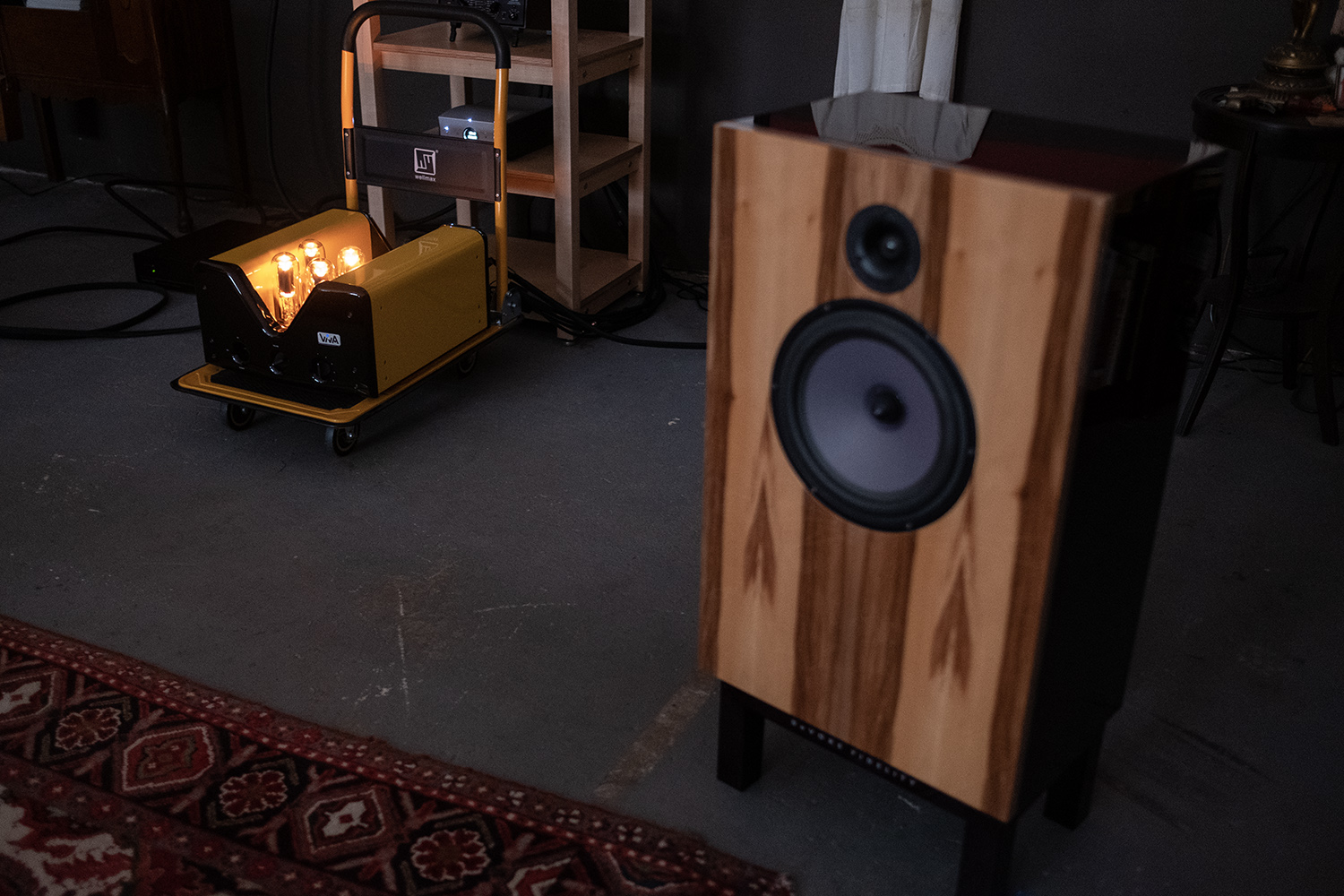
As I said up front, there’s nothing like listening to 78s when it comes to how they sound. Nothing, not even a YouTube video of a 78. What’s more, I love this music as much as I love any music and find great joy in its company. Familiar performers like Fats Waller, BB King, Sonny Terry, and John Lee Hooker positively came to life in Barn, practically leaping out into the room with as much energy and force as I’ve heard from any hifi. I’m talking a rich, startlingly dynamic, and soul stirring sound that consistently elicited big smiles, head shaking, and the urge to dance the night away. There’s an immediacy captured by 78s that is infectious, delightful, and impossible to ignore. Sitting on the comfy couch on the Barn’s B-Side, I was transported to other times and other places on a music-inspired express.
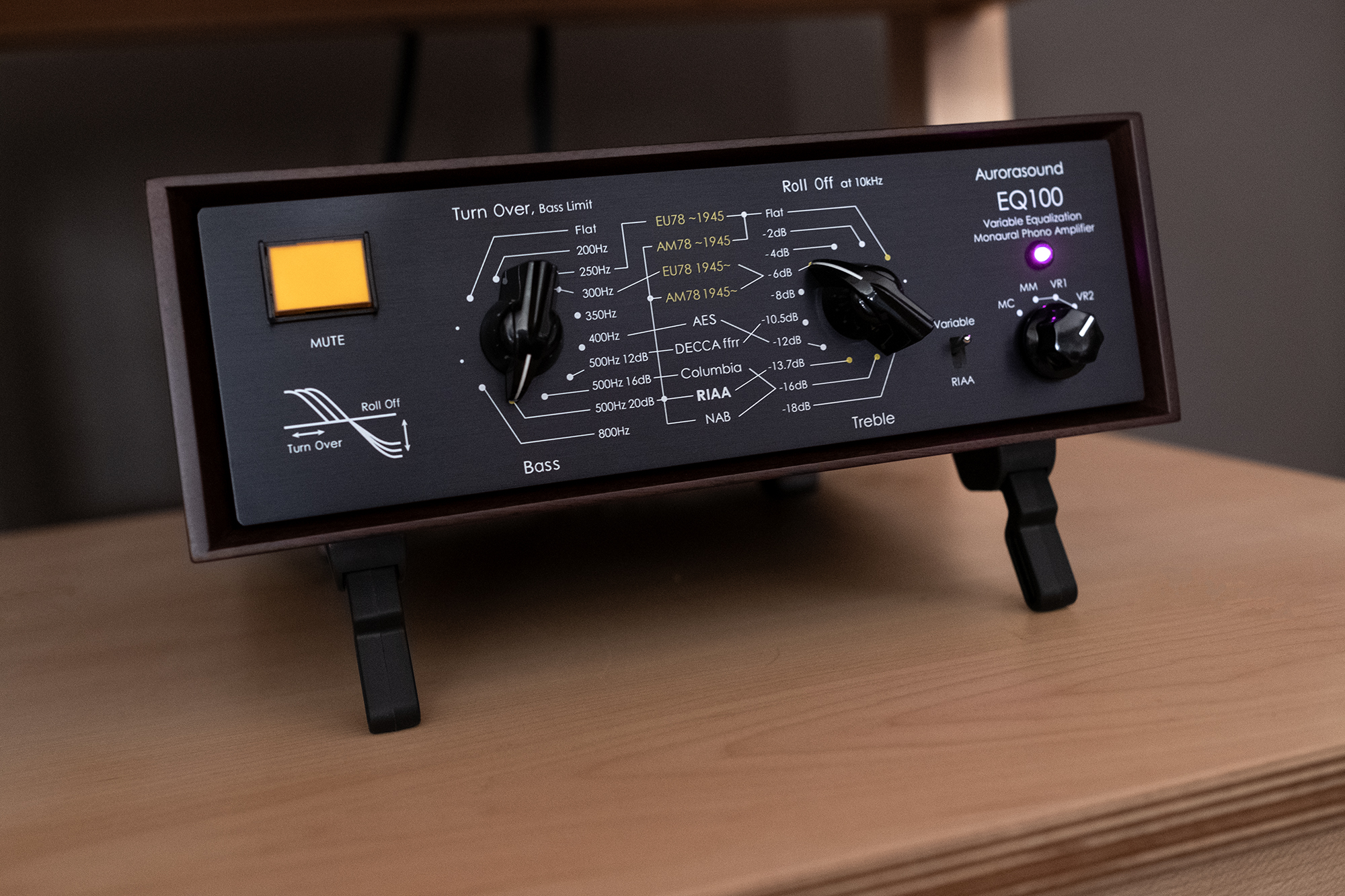
Of equal delight were the records that were new to me. While I sampled every 78 I ended up buying, there’s no comparison to hearing them properly played through a fine hifi. Maria Elena Sandoval startled into the Barn eliciting a few positive expletives from my listening friends and me due to the raw energy and emotion conveyed by her powerful voice. Bobby Sue & The Freeloaders “Relief Check” is one big beautiful double entendre that brought genuine laughter out loud with its raw suggestive sass. The Staple Singers “Uncloudy Day” begins with electric guitar and singers and continues until about 1:30 in when Mavis Staples enters with more presence and commanding power than a freight train. This is music reproduction that moves people to tears of joy, I’ve seen it happen, which is exactly what I’m after when listening to music on the hifi—a pure, unbridled emotional response while being completely captive in the moment. That shit is better than vitamins and cocaine.
Of course when talking about the sound of 78s we cannot overlook the relatively simple recording process employed which plays an important part in what we hear (I know you know that recording quality is important for any format, even hi-res digital).
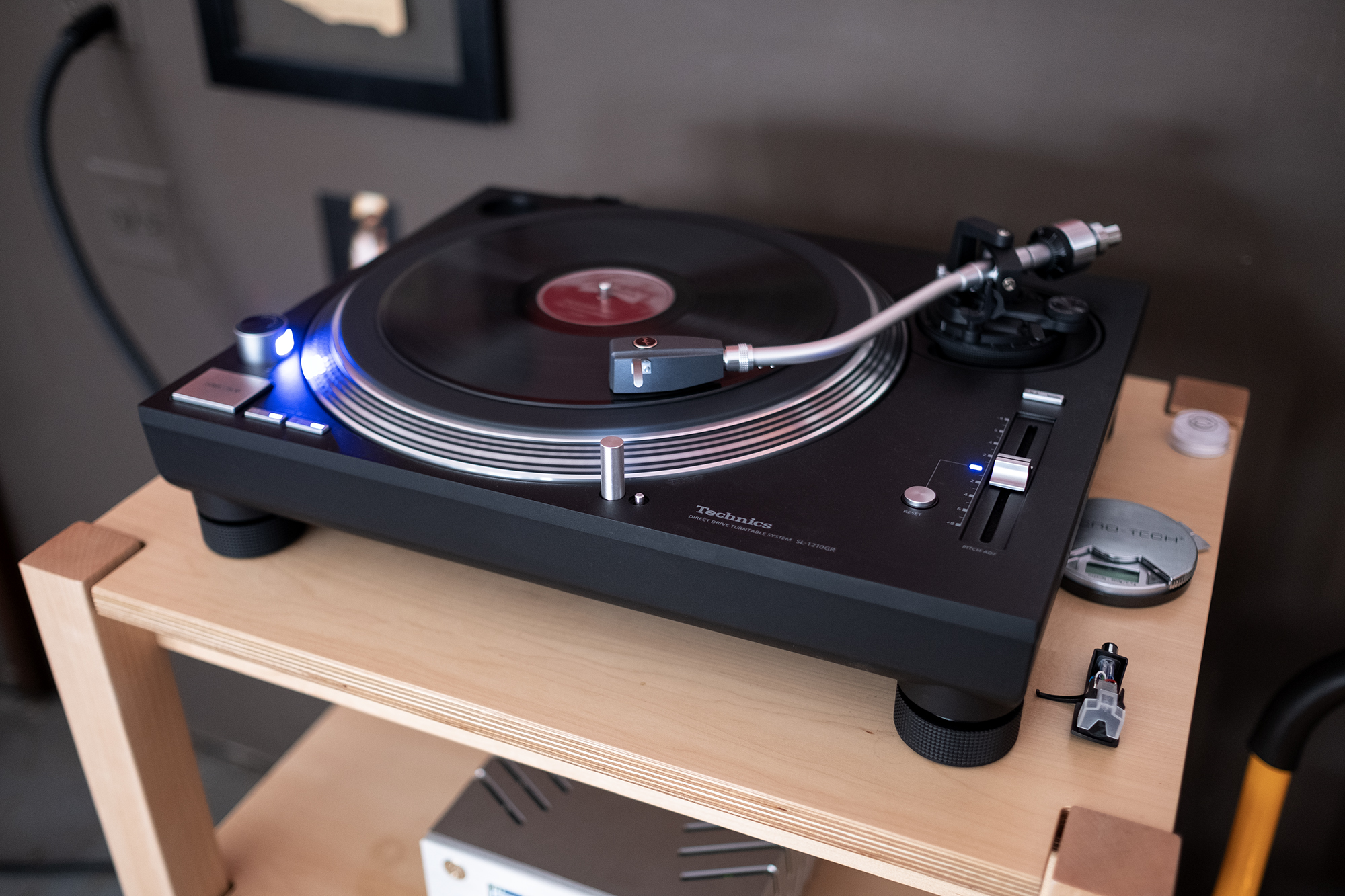
The Technics SL-1210GR ‘table is a joy to use and at a hair under $1800 strikes me as offering great value as well. The Ortofon SPU is the 78 cartridge I’d buy if I was putting together a for life 78-playing rig [footnote 2]. For anyone considering this super duo—the SL-1210GR/SPU Mono CG 65—please note that you’ll need to get the heavier Technics counterweight that’s included with the more expensive Technics SL-1200G ‘table to deal with the SPU’s weight. Technics provided the heavier counterweight for this review.
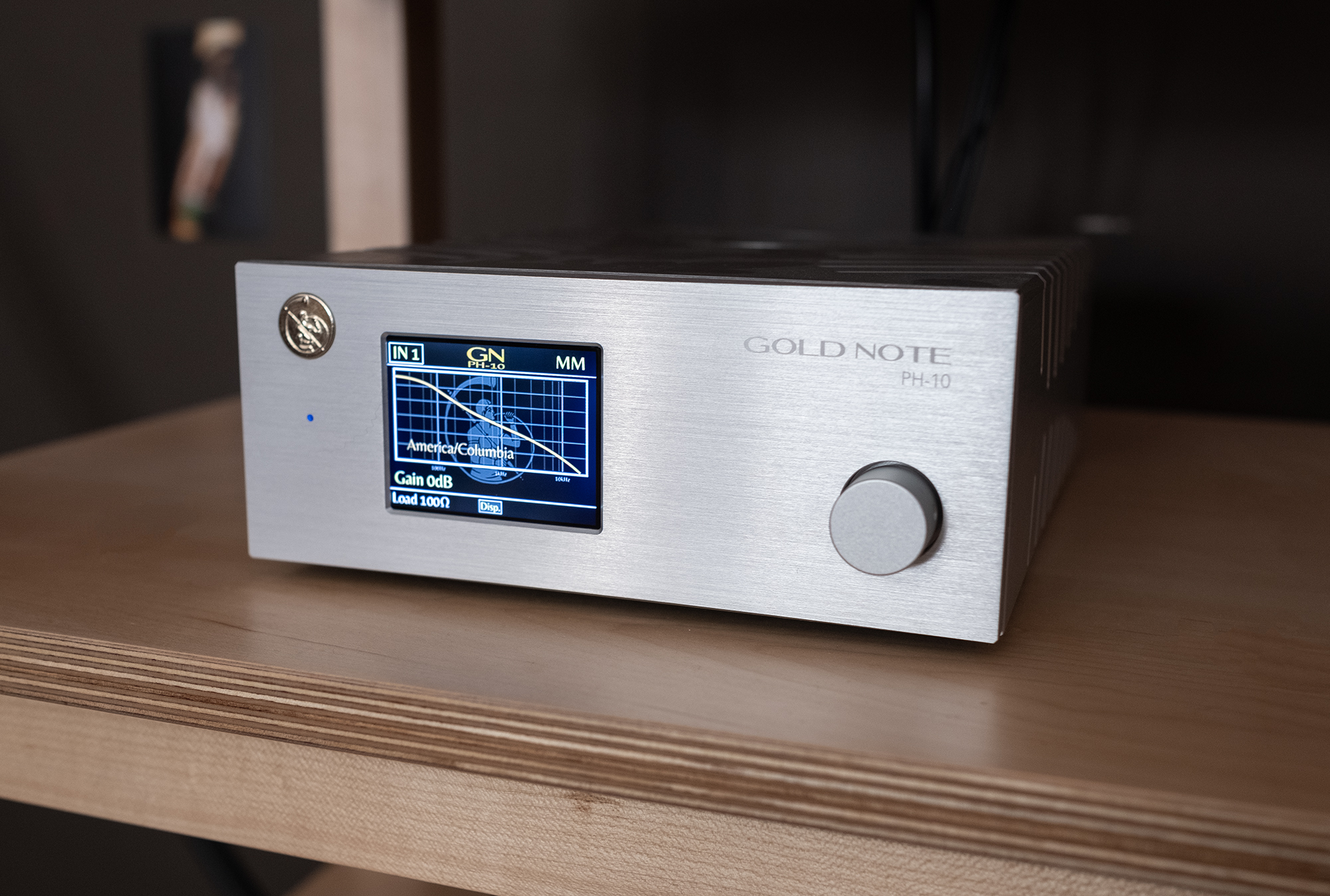
In terms of phono stages, the Gold Note PH-10 is clearly the more accommodating of the two for people who also want to play stereo records. While it is limited to a few EQ curves, they suffice for the casual 78 listener. If you’re looking to go all in, the Aurorasound EQ-100 is a joy to use and offers 100 EQ curve combinations which should satisfy even the ardent 78 collector. In terms of value, both offer a lot of bang for your buck and both are very nicely made. I enjoy the striking difference between the Gold Note’s color screen and the Aurorasound’s chicken head knobs, which I admit offered more pleasure in use. But that’s just me. As you’d expect, dialing in the proper curves for each record brings the music contained therein to fuller life, filling out the sound/body and life while reducing noise. Kinda like focusing a camera lens on the music so the serious 78 collector will appreciate the Aurorasound EQ-100’s greater flexibility.
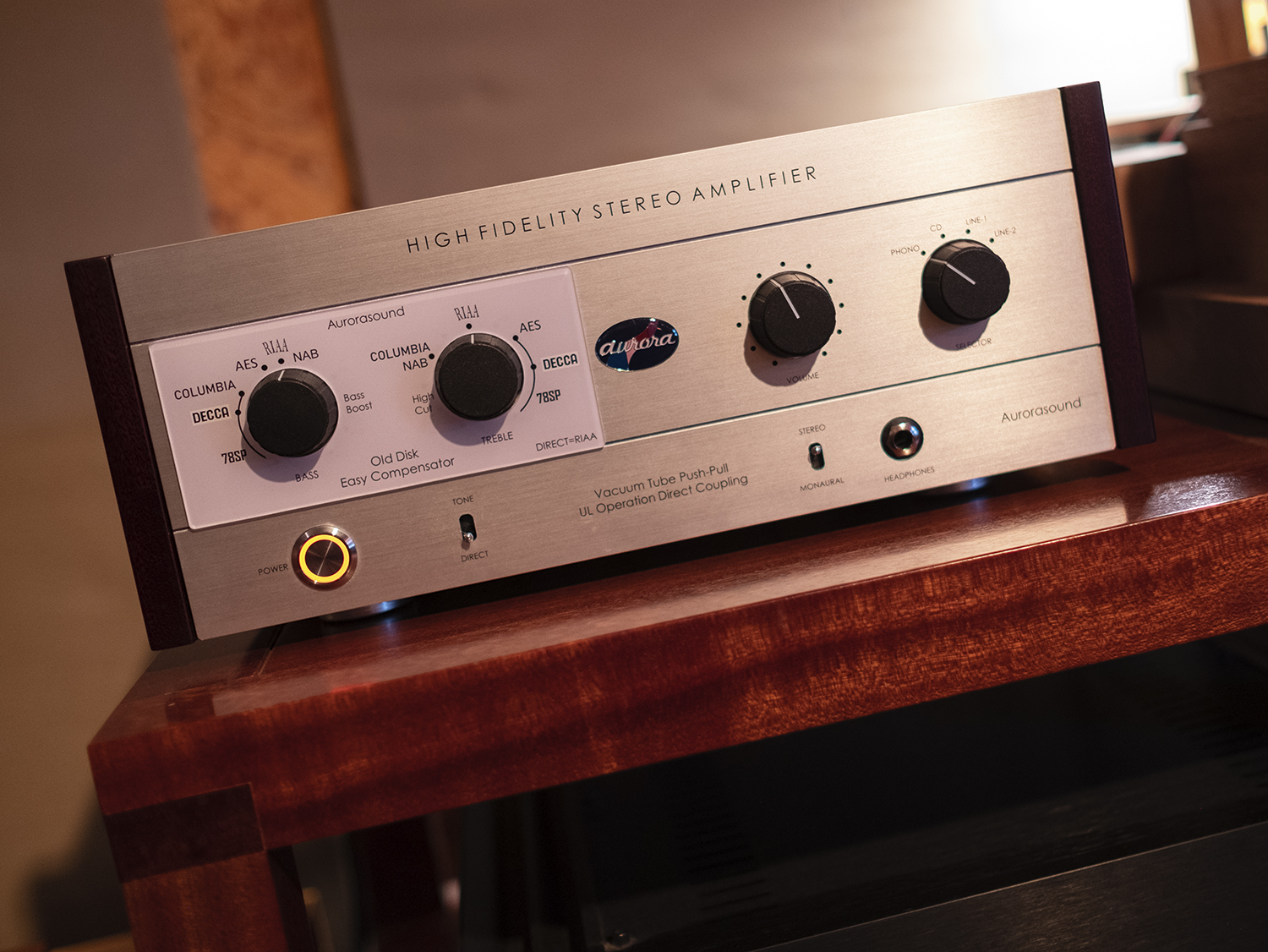
Another interesting option for the fledgling 78 collector is the Aurorasound HFSA-01 integrated amp that includes a phono stage and EQ Curves! I wrote about listening to 78s at John DeVore’s place using the HFSA-01 and I recommend giving that a read if your fancy is the least bit tickled.
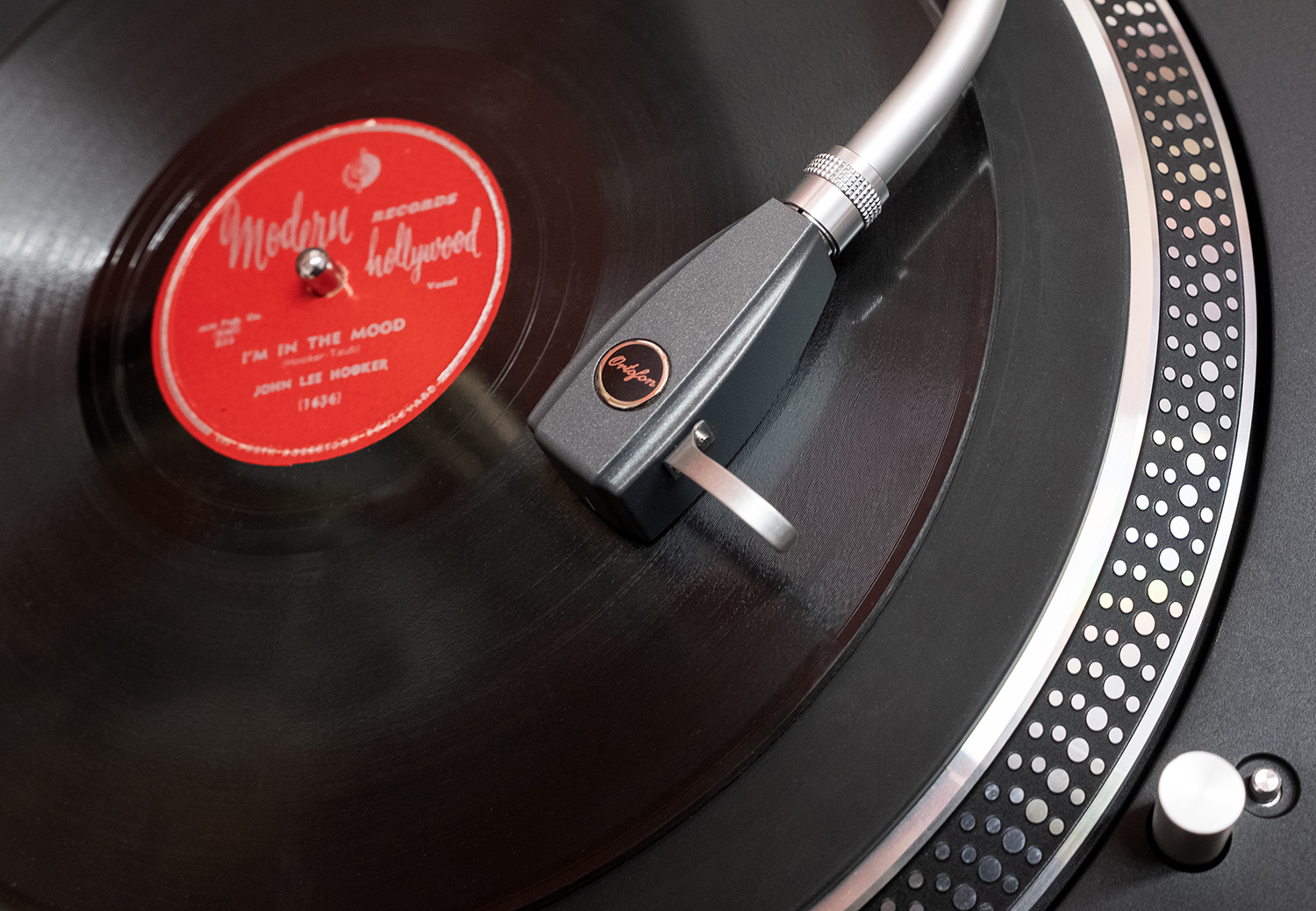
The idea for this review has been cooking for years, mainly because I wanted to experience the great joy listening to 78s brings in Barn and share that joy with you. There is nothing that compares to the experience and getting up every 3 or so minutes to flip or change a disc certainly helps keep you focused on the music at hand. Of course the music selection available on 78s is largely of an era yet beautifully broad. I could easily, way too easily, find hundreds and hundreds of 78s I’d love to own just looking at eBay today. Discogs is another great source.
In the end, listening to music on the hifi is experiential in nature, not limited to issues of sound quality or format, and the impetus driving that experience is music. For me, selecting, collecting, and listening to 78s offers an experience unlike any other recorded medium and the entire experiential package is filled with joy, amazement, and a heart warming sense of humanness. Little slices of life that sound and feel as alive as a friend’s laughter.
1. When buying anything on eBay, I only buy from sellers with a 98% or higher feedback rating and I always read any neutral or negative comments before committing to a purchase. I’ve been on eBay since 1998 (yikes!) and have a 100% feedback rating from way too many purchases and a bunch of sales.
2. And so my 78 project begins (also purchased on eBay):

Company Websites
Technics
Ortofon
Gold Note | US Importer Website: Fidelity Imports
Aurorasound | US Distributor Website: highend-electronics

